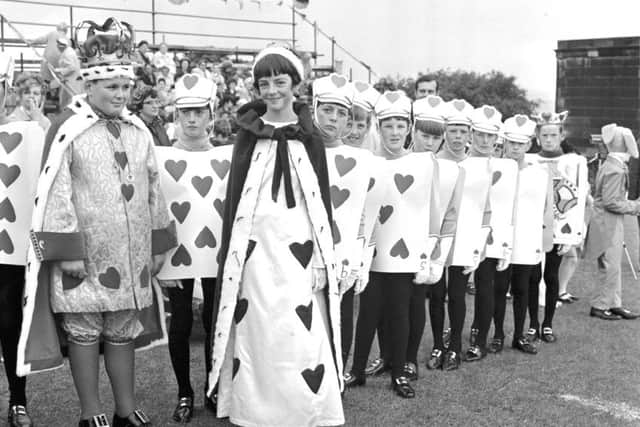How the struggle of workers sowed the seeds of Scotland's gala days
This article contains affiliate links. We may earn a small commission on items purchased through this article, but that does not affect our editorial judgement.


Gala days remain as much a part of the summer calendar in some parts of Scotland as they did 200 years ago, when they were held to mark successful wins for worker’s rights – or simply to raise some cheer during tough economic times with their Queens and Kings, brass bands, decorated floats and rousing speeches.
The first gala day in Scotland is thought to have been held in the 1770 in Loanhead, when miners - and their children - from the Dryden Colliery were invited to a feast to celebrate the birthday of the landowner, Lord Lockhart of Carnwath.
Advertisement
Hide AdAdvertisement
Hide AdFrom there on, small-pit based sports days and children’s play days would be held for individual collieries, with workers and their families often cut off from larger summer festivals in towns and cities, according to the National Mining Museum Scotland.


It was in the mid 1800s that gala days were held to celebrate the might of the worker’s movement and their successes in securing better pay and conditions for staff – and not just in mining.
n Paisley, Sma’ Shot Day is still celebrated to mark the victory of the town’s weavers to get paid for ‘the sma’ shot’– the thread that bound the colourful weft and warp threads of the famous shawls.
Because the sma’ shot was not seen on the garment , manufacturers would refuse to pay for it with weavers buying the thread out of their own pocket.


A long dispute followed with the manufacturers ultimately backing down.
In 1856, the first Saturday in July, a traditional holiday for the weavers was renamed Sma’ Shot Day in honour of the worker’s victory.
The Charleston Drum, traditionally used to rally weavers for meetings and speeches, summoned workers to the rail station for their annual day away – usually to the beaches of Ayr and Saltcoats.
Dr Dan Coughlan, curator in textiles at Paisley Museum, said: “It was very much a family thing. I would imagine the day would be a great relief to them. They would work long days, wouldn’t be able to get a day off so for them to have this one day away would have been a huge thing.”


Advertisement
Hide AdAdvertisement
Hide AdIn 1871, a gala day was born out of the major achievement of the Union Board of Fife to secure an eight-hour working day for miners.
The National Mining Museum Scotland at Newtongrange, Midlothian, documents the invite from the union to coal owners, urging them to attend the special day.
It said: “By complying with this invitation, it will be but hastening the time, which is not far in the distant, when master and servant shall meet on one common platform to settle the differences that exist between us.”


On June 5 1871, the first event was held in Kirkcaldy. A further document shows that no coal owners turned up.
However, 20 colliery districts representing around 100 miners did show – with their “wives and sweethearts” also there to enjoy a mile-long procession and the tunes of six brass bands.
In 1953, the Scottish Miner’s Gala Day at King’ Park, by Holyrood Palace, Edinburgh, is believed to be the biggest event of its kind on record.
More than 100,000 people took part with the procession led from the Royal Mile by Aneurin Bevan MP.
George Archibald , former chief surveyor for National Coal Board and volunteer at the National Mining Museum for Scotland said the King’s Park Gala was abandoned with the closure of the Scottish pits.
Advertisement
Hide AdAdvertisement
Hide AdHowever, the mining roots of galas still lived on, Mr Archibald added:
“Local galas are still on the go and a small tribute is still paid to their mining origin by say a banner paraded by men dressed as miners,” Mr Archibald said.
DOWNLOAD THE SCOTSMAN APP ON ITUNES OR GOOGLE PLAY
